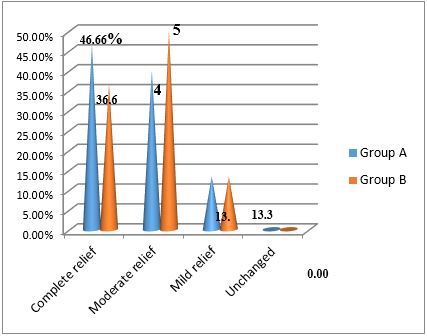Comparative study of clinical evaluation of Tab. Bhumiamalaki Ghanavati and Tab. Norfloxacin in the management of Pittaja Mootrakruccha w.s.r. to Urinary Tract Infection
DOI:
https://doi.org/10.21760/jaims.8.8.2Keywords:
Pittaja Mootrakruccha, Bhumiamalaki Ghanavati, Urinary Tract Infection, Sadaha Mootrapravritti, Sashula Mootrapravritti, AyurvedaAbstract
Background: Prevalence and incidence of urinary tract infection (UTI) is higher, and caused by the invasion of microorganisms in the genitourinary tract. Most common causative organism is E-coli. Occurring commonly in females due to short urethra. UTI can be correlated with Mootrakruccha (dysuria) which is elaborated by Acharya Charaka in Trimarmiya Chikitsa Adhyaya. Pittaja Mootrakruccha occurs due to vitiation of Pitta Dosha, mostly seen in patients receiving Pitta Prakopaka Ahara and Vihara. Common symptoms are Sadaha (burning), Sashula (painful) and Muhurmuhu (frequency) Mootrapravritti (micturation). Aim: To do comparative study of clinical evaluation of Bhumiamalaki Ghanavati and Tab. Norfloxacin in the management of Pittaja Mootrakruccha w.s.r. to UTI. Materials & Methods: In this study, 60 patients were equally divided by simple random sampling method into Group A administered with Bhumiamalaki Ghanavati (250mg-2 BD) having cooling, antispasmodic, analgesic property and Tab. Norfloxacin (400mg - BD) to Group B for 10 days, respectively. The primary outcomes were measured by chi-square test and run test for interpretation of subjective and objective criteria. Observation and Results: Findings of 30 patients in each group revealed that in group A, relief of 63.63%, 65% and 56.86% was observed in Sadaha, Sashula and Muhurmuhu Mootrapravritti complaint, respectively. Conclusion: Administration of Bhumiamalaki Ghanavati shows significant improvement on subjective and objective criteria.
Downloads
References
Yadav M, Pal R, Damrolien S, Khumanthem SD. Microbial spectrum of urinary tract infections and its antibiogram in a tertiary care hospital. Int J Res Med Sci [Internet]. 2017 May 27 [cited 2023 Jul. 17]; 5(6):2718-22.
Foxman B. Epidemiology of urinary tract infections: incidence, morbidity, and economic costs. Am J Med. 2002; 113 Suppl 1A:5S-13S. doi: 10.1016/s0002-9343(02)01054-9
Kalpana gupta, Barbara w. Trautner Urinary Tract infection In: Dennis Kasper, editor. Harrison's Principles of Internal Medicine, 19th ed.USA: McGraw-Hill; 2015.p. 861-68 4.
Shashirekha H.K., Bargale Sushant Sukumar, Charak Samhita, Chikitsa sthana; Trimarmiya Chikitsa Adhyaya: chapter 26,32-44,1st ed, Chaukhambha publication, New Delhi2020;p 453-59
Vasant Patil, Rajeshwari N.M., Susruta Samhita Of Maharsi Susruta, Uttartantra; mutrakrcchra pratisedham adhyaya: chapter 59,3-14,1st ed, Chaukhambha Publication, Varanasi,2018; p 466-67.
Brahmanad Tripathi, Sharangdhar Samhita, madhyamkhanda; chapter 2nd,1-2, Chaukhambha publication Varanasi,2017;p 90.
Brahmanad Tripathi, Sharangdhar Samhita, madhyamkhanda; chapter 8th, 1, Chaukhambha publication, Varanasi, 2017; p 139.
Ravindra Angadi, Bhaisajya Kalpana Vijnanam, Ed 2011, Chaukhambha Surabharati Prakashan, Varanasi 2011; p.123
Apeksha D. Patil, Dhiraj B. Patil, Sagar V. Ital. Comparative Pharmaceutico - Analytical Study of Kushthaghna Mahakashaya and its Ghanavati w.s.r. to evaluate its shelf life. J Ayurveda Integr Med Sci 2017; 4:80-85.
Geethangili M and Ding S-T (2018) A Review of the Phytochemistry and Pharmacology of Phyllanthus urinaria L. Front. Pharmacol. 9:1109. doi: 10.3389/fphar.2018.01109
Pandit Narahari, Rajanigantu, Parpatadivarga ,7th chapter,61-63, edited by Dr.Indradeva tripathi,6th edition, Chaukhambha Krishnadas Academy, Varanasi,2016;p123.
Ayurvedic pharmacopoeia of India, part-1, volume -1, page no111
Lai CH, Fang SH, Rao YK, et al. Inhibition of Helicobacter pylori-induced inflammation in human gastric epithelial AGS cells by Phyllanthus urinaria extracts. J Ethnopharmacol. 2008; 118(3):522-526. doi:10.1016/j.jep.2008.05.022
Dabur R, Gupta A, Mandal TK, et al. Antimicrobial activity of some Indian medicinal plants. Afr J Tradit Complement Altern Med. 2007; 4(3):313-318. Published 2007 Feb 16. doi:10.4314/ajtcam.v4i3.31225
Fang SH, Rao YK, Tzeng YM. Anti-oxidant and inflammatory mediator's growth inhibitory effects of compounds isolated from Phyllanthus urinaria. J Ethnopharmacol. 2008; 116(2):333-340. doi:10.1016/j.jep.2007.11.040.















